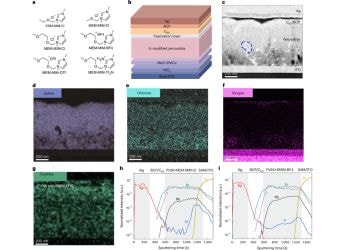- Home
- Science
- Science News
- NASA’s Hubble and Webb Discover Bursting Star Formation in Small Magellanic Cloud
NASA’s Hubble and Webb Discover Bursting Star Formation in Small Magellanic Cloud
NASA’s Hubble and Webb telescopes observe explosive star formation in the Small Magellanic Cloud's NGC 460 and NGC 456 clusters.

Photo Credit: NASA/ESA/Catholic University of America
Hubble shows the images of dust in the form of a silhouette against the blocking light
Scientists from NASA observed the bursting expansion of gas, stars, and dust from the glittering territory of the dual star clusters using Hubble and Webb space telescopes. NGC 460 and NGC 456 stay in the Small Magellanic Cloud, which are open clusters, with dwarf galaxies and orbit the Milky Way. These clusters are part of the extensive star complex clusters and nebulae that are most likely to be linked to each other. Stars are born upon the collapse of clouds.
Hubble and Webb Reveal Explosive Star Births in Small Magellanic Cloud
As per a report from NASA, the open clusters are from anywhere from a few dozen to many young stars, which are loosely bound by gravity. The images captured by Hubble capture the glowing and ionised gas, which comes from stellar radiation and blows bubbles in the form of gas and dust, which is blue in colour. The infrared of Webb shows the clumps and delicate filament-like structures and dust, which is red in colour.
NGC 460 and NGC 456: A Window into Early Universe Star Formation
Hubble shows the images of dust in the form of a silhouette against the blocking light; however, in the images of Webb, the dust is warmed by starlight and glows with infrared waves. The blend of gas and dust between the stars of the universe is called the interstellar medium. The region holding these clusters is known as the N83-84-85 complex and is home to multiple, rare O-type stars. These are hot and extremely massive stars that burn hydrogen like the Sun.
Such a state mimics the condition in the early universe; therefore, the Small Magellanic Cloud gives a nearby lab to find out the theories regarding star formation and the interstellar medium of the cosmos's early stage.
With these observations, the researchers tend to study the gas flow from convergence to divergence, which helps in refining the difference between the Small Magellanic Cloud and its dwarf galaxy, and the Large Magellanic Cloud. Further, it helps in knowing the interstellar medium and gravitational interactions between the galaxies.
Get your daily dose of tech news, reviews, and insights, in under 80 characters on Gadgets 360 Turbo. Connect with fellow tech lovers on our Forum. Follow us on X, Facebook, WhatsApp, Threads and Google News for instant updates. Catch all the action on our YouTube channel.
Related Stories
- Samsung Galaxy Unpacked 2025
- ChatGPT
- Redmi Note 14 Pro+
- iPhone 16
- Apple Vision Pro
- Oneplus 12
- OnePlus Nord CE 3 Lite 5G
- iPhone 13
- Xiaomi 14 Pro
- Oppo Find N3
- Tecno Spark Go (2023)
- Realme V30
- Best Phones Under 25000
- Samsung Galaxy S24 Series
- Cryptocurrency
- iQoo 12
- Samsung Galaxy S24 Ultra
- Giottus
- Samsung Galaxy Z Flip 5
- Apple 'Scary Fast'
- Housefull 5
- GoPro Hero 12 Black Review
- Invincible Season 2
- JioGlass
- HD Ready TV
- Laptop Under 50000
- Smartwatch Under 10000
- Latest Mobile Phones
- Compare Phones
- Huawei Nova 15
- Huawei Nova 15 Pro
- Huawei Nova 15 Ultra
- OnePlus 15R
- Realme Narzo 90x 5G
- Realme Narzo 90 5G
- Vivo S50 Pro Mini
- Vivo S50
- Asus ProArt P16
- MacBook Pro 14-inch (M5, 2025)
- OnePlus Pad Go 2 (5G)
- Infinix Xpad Edge
- OnePlus Watch Lite
- Just Corseca Skywatch Pro
- Acerpure Nitro Z Series 100-inch QLED TV
- Samsung 43 Inch LED Ultra HD (4K) Smart TV (UA43UE81AFULXL)
- Asus ROG Ally
- Nintendo Switch Lite
- Haier 1.6 Ton 5 Star Inverter Split AC (HSU19G-MZAID5BN-INV)
- Haier 1.6 Ton 5 Star Inverter Split AC (HSU19G-MZAIM5BN-INV)







![[Partner Content] OPPO Find X9 Two Week Experience: Here's Why It Stands Out](https://www.gadgets360.com/static/mobile/images/spacer.png)









